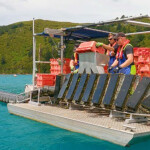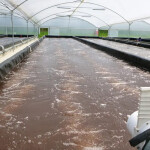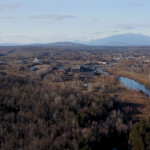Joseph Sabbagh is the president of Calabasas, California, U.S.A.-based Sax Maritime Associates, which has been offering consulting services to those invested or considering investing in the seafood industry since 1985.
I look forward to the insights coming from the 2024 Global Shrimp Forum, taking place 3 to 5 September in Utrecht, the Netherlands. I have a great amount of respect for the GSF’s organization and am impressed with many of the 87-plus speakers and topics being presented at the event. They represent most of the significant farmed shrimp producers and providers of ancillary services to aquaculture in the world.
I have enjoyed eating shrimp ever since I can remember. In the 1960s and '70s, it was considered a delicacy for our family’s holidays. When I entered the industry in 1979, I promoted shrimp heavily out of my retail locations. In the early '80s, I worked for a 33-store chain in New England. Just about everyone loved shrimp at that time, and I wanted to get more involved in it. Since then, I have been retained professionally by U.S. harvesters, as well as Mexican and major Asian shrimp importers. From 1979 until now, selling more shrimp has been a centerpiece of my services to retailers, restaurants, distributors, and value-added companies.
Both in my work and outside of it, I try to promote all species of farmed and wild shrimp in all applications. However, since 2010, I have warned any interested party who asks against new investment in shrimp importing, and I continue to do so today, as I have witnessed a negative narrative against aquaculture rise and grow. That negative perception continues unchallenged today, virulently targeting farmed shrimp especially. I am certain a large and growing segment of consumers in the U.S. and Canada have a negative view of shrimp farming and the farmed shrimp products on offer in the grocery stores and restaurants they frequent. I believe the same is true in the European Union and U.K. I suggest everyone involved in the Global Shrimp Forum inquire about the real, unvarnished opinions their friends and family from outside the industry have about farmed shrimp.
Improving the prevalent false narrative about farmed and wild shrimp should be a greater priority of the industry, and should be a bigger focus at GSF than it appears to be, based on the conference’s speakers and program. Any for-profit company can check all the sustainable and ESG boxes to grow or catch any protein, but without enough demand for their products, their efforts are for naught. Of the 87 speakers listed, there are only three speakers whose jobs are focused on sales, marketing, or branding. Of those, as far as I’m aware, only CenSea Co-President Nate Torch has experience operating a successful shrimp-importing company. I could not find anyone else with a proven history in farmed shrimp sales. The Global Shrimp Forum needs many more speakers with successful shrimp-centric retail and foodservice sales and marketing experience – people who can offer qualitative research, SEM insights, proven sales-growth techniques, and experience with selling successfully via newer or nontraditional online channels. Even with better messaging, it will take time to turn things around.
GSF brings together some of the most-significant, well-financed multinational aquaculture companies in the world. Some were my clients or suppliers for my clients. If they are looking for higher profits from their farmed shrimp-based investments, they should be open to investing in better messaging for aquaculture. I understand that some of these companies have a very different ROI timeline than most other companies. However, if negative narratives continue to go unchecked, it will harm all stakeholders to an even higher level as time passes.
I’m not closely familiar with the financial condition of any company in the aquaculture industry, but I am well aware of the discouraging current state of the present shrimp market – and I am not expecting much improvement over the next few years, primarily because I am not optimistic about the Global Shrimp Council, or for that matter, the National Fisheries Institute or the Global Seafood Alliance’s ability to help the shrimp industry at this point.
The Global Shrimp Council, which emerged from the Global Shrimp Forum, is now relying on NFI for help and has retained a company that did a good job marketing avocados from Mexico. But, avocados are much different than shrimp.
I can think of nothing the NFI has done that has mitigated the attacks on aquaculture. As with all it does, it is reactive to the attacks as opposed to proactive.
In the past, GSA did a good job with the Best Aquaculture Practices certification program. But since then, it has done little and it is now moving into the wild-caught sector.
In general, none of these organizations seem to be able to generate the funds necessary to change negative perceptions of shrimp and drive a positive, consumer-driven narrative. In my opinion, that will take at least USD 100 million (EUR 91.5 million) over the next seven years.
I know the Aquaculture Stewardship Council (ASC) has been doing some great work in shrimp marketing of late, and I currently see ASC as the best option for this type of effort. I hope it can continue with the help of the major players in aquaculture to the best interest of all involved.







